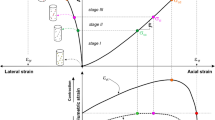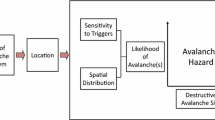Abstract
Aiming to accurately assess the intensity of rockburst in coal mines, we propose a rockburst risk assessment model using the improved catastrophe progression method based on its sudden, complex, and non-linear characteristics. A risk assessment indicator system for rockburst is established based on the occurrence conditions of rockburst, which comprehensively considers 10 main influencing factors. We introduce a combined weighting method consisting of the variation coefficient method and analytic hierarchy process (AHP) to determine the weight and ranking of evaluation indicators, which improves the catastrophe progression method. Finally, by applying 10 coal mine cases into the established model and comparing them with the unimproved catastrophe progression method and several other risk assessment methods, we conclude that the accuracy of the model in assessing rockburst intensity level has increased by a maximum of 42.85%. Our work proves the effectiveness and practicality of the risk assessment model, which can provide good theoretical guidance for assessing rockburst intensity level in coal mines. Furthermore, based on the model risk assessment results and comparative analysis, this paper provides feasible suggestions for reducing the intensity of rockbursts.







Similar content being viewed by others
Data availability
The datasets generated and analyzed during the current study are available from the corresponding author on reasonable request.
References
Cai W, Bai X, Si G, Cao W, Gong S, Dou L (2020) A monitoring investigation into rock burst mechanism based on the coupled theory of static and dynamic stresses. Rock Mech Rock Eng 53(12):5451. https://doi.org/10.1007/s00603-020-02237-6
Chen L, Gao X, Gong S, Li Z (2020) Regionalization of green building development in china: a comprehensive evaluation model based on the catastrophe progression method. Sustainability 12(15):5988. https://doi.org/10.3390/su12155988
Chen J, Zhu C, Du J, Pu Y, Pan P, Bai J, Qi Q (2022) A quantitative pre-warning for coal burst hazardous zones in a deep coal mine based on the spatio-temporal forecast of microseismic events. Process Safety Environ Protect 159(1105). https://doi.org/10.1016/j.psep.2022.01.082
Du J, Chen J, Pu Y, Jiang D, Chen L, Zhang Y (2021). Risk assessment of dynamic disasters in deep coal mines based on multi-source, multi-parameter indexes, and engineering application. Process Safety Environ Protect 155(575). https://doi.org/10.1016/j.psep.2021.09.034
Feng G, Xia G, Chen B, Xiao Y, Zhou R (2019) A method for rockburst risk assessment in the deep tunnels of hydropower stations based on the monitored microseismicity and an optimized probabilistic neural network model. Sustainability 11(11):3212. https://doi.org/10.3390/su11113212
Gao M, Song Z, Duan H, Xin H, Tang J (2020) Mechanical properties and control rockburst mechanism of coal and rock mass with bursting liability in deep mining. Shock Vibrat 2020(1). https://doi.org/10.1155/2020/8833863
Ghasemi E, Gholizadeh H, Adoko AC (2020) Evaluation of rockburst occurrence and intensity in underground structures using decision tree approach. Eng Comp 36(1):213. https://doi.org/10.1007/s00366-018-00695-9
Guozhong Hu, Chunbo W, Jialin Xu, Xufei Wu, Wei Q (2021) Experimental investigation on decreasing burst tendency of hard coal using microwave irradiation. J China Coal Soc 46(2):450. https://doi.org/10.13225/j.cnki.jccs.XR20.1906
He Z, Lu C, Zhang X, Guo Y, Wang C, Zhang H, Wang B (2022) Research on mechanisms and precursors of slip and fracture of coal-rock parting-coal structure. Rock Mech Rock Eng 55(3):1343. https://doi.org/10.1007/s00603-021-02724-4
He M, Zhang Z, Zhu J, Li N, Li G, Chen Y (2021) Correlation between the rockburst proneness and friction characteristics of rock materials and a new method for rockburst proneness risk assessment: field demonstration. J Petrol Sci Eng 205(108997). https://doi.org/10.1016/j.petrol.2021.108997
He S, Song D, Mitri H, He X, Chen J, Li Z, Xue Y, Chen T (2021) Integrated rockburst early warning model based on fuzzy comprehensive evaluation method. Int J Rock Mech Mining Sci 142(104767). https://doi.org/10.1016/j.ijrmms.2021.104767
Hou WT, Wang HP, Yuan L, Wang W, Xue Y, Ma ZW (2021) Experimental research into the effect of gas pressure, particle size and nozzle area on initial gas-release energy during gas desorption. Int J Min Sci Technol 31(2):253. https://doi.org/10.1016/j.ijmst.2021.01.002
Jin P, Wang E, Huang N, Wang S (2013) Catastrophe progression method on forecast of rock burst. Disas Adv, 2.
Li L (2020) Rockburst grade evaluation based on improved catastrophe progression method. Hebei University of Engineering
Li CC, Mikula P, Simser B, Hebblewhite B, Joughin W, Feng X, Xu N (2019) Discussions on rockburst and dynamic ground support in deep mines. J Rock Mech Geotechnical Eng 11(5):1110. https://doi.org/10.1016/j.jrmge.2019.06.001
Liu N, Li C, Feng R, Xia X, Gao X (2021) Experimental study of the influence of moisture content on the mechanical properties and energy storage characteristics of coal. Geofluids 2021(1). https://doi.org/10.1155/2021/6838092
Ma T, Tang C, Tang S, Kuang L, Yu Q, Kong D, Zhu X (2018) Rockburst mechanism and risk assessment based on microseismic monitoring. Int J Rock Mech Mining Sci 110(177). https://doi.org/10.1016/j.ijrmms.2018.07.016
Mi C, Zuo J, Sun Y, Zhao S (2022) Investigation on rockburst mechanism due to inclined coal seam combined mining and its control by reducing stress concentration. Nat Resour Res 31(6):3341. https://doi.org/10.1007/s11053-022-10118-8
Miao S, Cai M, Guo Q, Huang Z (2016) Rock burst risk assessment based on in-situ stress and energy accumulation theory. Int J Rock Mech Mining Sci 83(86). https://doi.org/10.1016/j.ijrmms.2016.01.001
Ranjith PG, Zhao J, Ju M, De Silva RVS, Rathnaweera TD, Bandara AKMS (2017) Opportunities and challenges in deep mining: a brief review. Engineering 3(4):546. https://doi.org/10.1016/J.ENG.2017.04.024
Senan CPC, Ajin RS, Danumah JH, Costache R, Arabameri A, Rajaneesh A, Sajinkumar KS, Kuriakose SL (2023) Flood vulnerability of a few areas in the foothills of the Western Ghats: a comparison of AHP and F-AHP models. Stoch Env Res Risk Assess 37(2):527. https://doi.org/10.1007/s00477-022-02267-2
Singh LK, Jha MK, Chowdary VM (2022) Application of catastrophe theory to spatial analysis of groundwater potential in a sub-humid tropical region: a hybrid approach. Geocarto Int 37(3):700. https://doi.org/10.1080/10106049.2020.1737970
Stas L, Soucek K, Knejzlik J (2007) First results of conical borehole strain gauge probes applied to induced rock mass stress changes measurement. Acta Geodyn Et Geomater 4(4):77
State Administration of Coal Mine Safety Implementation Rules for the Prevention and Control of Coal Mine Rockburst, China Coal Industry Publishing House,2018
Tang LZ, Xia KW (2010) Seismological method for risk assessment of areal rockbursts in deep mine with seismic source mechanism and unstable failure theory. J Cent South Univ Technol 17(5):947. https://doi.org/10.1007/s11771-010-0582-5
Wang K, Du F (2020). Coal-gas compound dynamic disasters in China: a review. Proc Saf Environ Prot 133(1). https://doi.org/10.1016/j.psep.2019.10.006
Wang C, Wu A, Lu H, Bao T, Liu X (2015) Assessing rockburst tendency based on fuzzy matter-element model. Int J Rock Mech Mining Sci 75(224). https://doi.org/10.1016/j.ijrmms.2015.02.004
Wang M W, Liu Q Y, Wang X, Shen F Q, Jin J L (2020). Risk assessment of Rockburst Based on Multidimensional Connection Cloud Model and Set Pair Analysis Int J Geomech 20(1). https://doi.org/10.1061/(ASCE)GM.1943-5622.0001546
Wang W, Wang H, Zhang B, Wang S, Xing W (2021) Coal and gas outburst risk assessment model based on extension theory and its application. Proc Saf Environ Prot 154(329). https://doi.org/10.1016/j.psep.2021.08.023
Wang H, Zhang B, Yuan L, Wang S, Yu G, Liu Z (2022) Analysis of precursor information for coal and gas outbursts induced by roadway tunneling: a simulation test study for the whole process. Tunnell Underground Space Technol 122(104349). https://doi.org/10.1016/j.tust.2021.104349
Wei C, Zhang C, Canbulat I, Cao A, Dou L (2018) Evaluation of current coal burst control techniques and development of a coal burst management framework. Tunnell Underground Space Technol 81(129). https://doi.org/10.1016/j.tust.2018.07.008
Xia G, Luan T, Sun M (2017) An evaluation method for sortie generation capacity of carrier aircrafts with principal component reduction and catastrophe progression method. Math Problems Eng 2017(1). https://doi.org/10.1155/2017/2678216
Xu C, Liu X, Wang E, Zheng Y, Wang S (2018). Rockburst risk assessment and classification based on the ideal-point method of information theory. Tunnell Underground Space Technol 81(382). https://doi.org/10.1016/j.tust.2018.07.014
Xue Y, Bai C, Qiu D, Kong F, Li Z (2020). Assessing rockburst with database using particle swarm optimization and extreme learning machine. Tunnell Underground Space Technol 98(103287). https://doi.org/10.1016/j.tust.2020.103287
Xue R, Liang Z, Xu N (2021). Rockburst risk assessment and analysis of activity characteristics within surrounding rock based on microseismic monitoring and numerical simulation. Int J Rock Mech Mining Sci 142(104750). https://doi.org/10.1016/j.ijrmms.2021.104750
Yin X, Liu Q, Pan Y, Huang X, Wu J, Wang X (2021) Strength of stacking technique of ensemble learning in rockburst risk assessment with imbalanced data: comparison of eight single and ensemble models. Nat Resour Res 30(2):1795. https://doi.org/10.1007/s11053-020-09787-0
Zhai S, Su G, Yin S, Yan S, Wang Z, Yan L (2020) Fracture evolution during rockburst under true-triaxial loading using acoustic emission monitoring. Bull Eng Geol Env 79(9):4957. https://doi.org/10.1007/s10064-020-01858-z
Zhang L, Zhang X, Wu J, Zhao D, Fu H (2020) Rockburst risk assessment model based on comprehensive weight and extension methods and its engineering application. Bull Eng Geol Env 79(9):4891. https://doi.org/10.1007/s10064-020-01861-4
Zhang H, Zeng J, Ma J, Fang Y, Ma C, Yao Z, Chen Z (2021a) Time series risk assessment of microseismic multi-parameter related to rockburst based on deep learning. Rock Mech Rock Eng 54(12):6299. https://doi.org/10.1007/s00603-021-02614-9
Zhang Q, Wang E, Feng X, Wang C, Qiu L, Wang H (2021b) Assessment of rockburst risk in deep mining: an improved comprehensive index method. Nat Resour Res 30(2):1817. https://doi.org/10.1007/s11053-020-09795-0
Zhang B, Wang H, Wang P, Yu G, Gu S (2023) Experimental and theoretical study on the dynamic effective stress of loaded gassy coal during gas release. Int J Min Sci Technol 33(3):339. https://doi.org/10.1016/j.ijmst.2022.09.025
Zheng Y, Zhong H, Fang Y, Zhang W, Liu K, Fang J (2019) Rockburst risk assessment model based on entropy weight integrated with grey relational BP neural network. Adv Civil Eng 2019(1). https://doi.org/10.1155/2019/3453614
Acknowledgements
This work was supported by the National Natural Science Foundation of China (Grant No. 52227901; Grant No. 52174081).
Funding
This work was supported by the National Natural Science Foundation of China (Grant No. 52227901; Grant No. 52174081).
Author information
Authors and Affiliations
Contributions
WX: conceptualization, methodology, investigation, writing—original draft. HW: conceptualization, funding acquisition, resources, supervision, writing—review & editing. JF: investigation, data collection and analysis. WW: investigation, data analysis and interpretation. XY: investigation, data processing.
Corresponding author
Ethics declarations
Conflict of Interest
The authors declare that they have no known competing financial interests or personal relationships that could have appeared to influence the work reported in this paper.
Additional information
Publisher's Note
Springer Nature remains neutral with regard to jurisdictional claims in published maps and institutional affiliations.
Rights and permissions
Springer Nature or its licensor (e.g. a society or other partner) holds exclusive rights to this article under a publishing agreement with the author(s) or other rightsholder(s); author self-archiving of the accepted manuscript version of this article is solely governed by the terms of such publishing agreement and applicable law.
About this article
Cite this article
Xing, W., Wang, H., Fan, J. et al. Rockburst risk assessment model based on improved catastrophe progression method and its application. Stoch Environ Res Risk Assess 38, 981–992 (2024). https://doi.org/10.1007/s00477-023-02609-8
Accepted:
Published:
Issue Date:
DOI: https://doi.org/10.1007/s00477-023-02609-8




